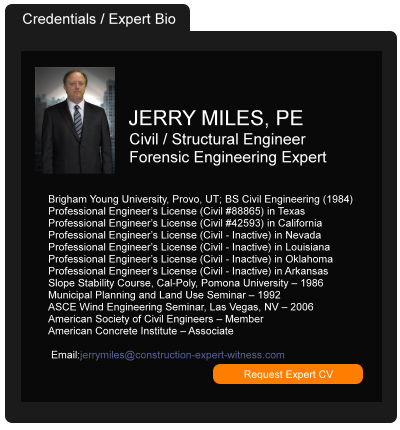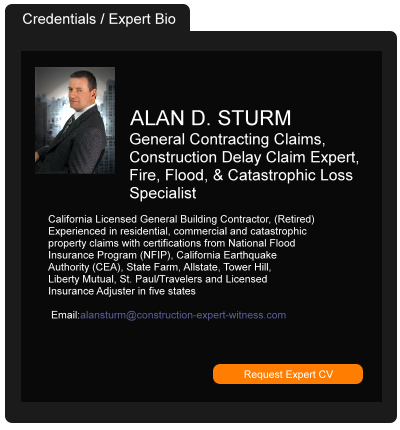You Are Not A “Liar” Simply Because You Amend Your Complaint
March 14, 2022 —
David Adelstein - Florida Construction Legal UpdatesIn litigation, it is common for a plaintiff to amend their complaint. They may amend to add additional parties. To add new claims. To change the factual allegations. Or, to change the theme of their case.
Most of the time, complaints are not verified by the plaintiff. Instead, complaints are drafted and signed by the plaintiff’s counsel.
A question becomes: how prior reiterations of a complaint can be used against the plaintiff to show they are a bunch of “liars” by making amendments to their complaint. Sounds prejudicial to the plaintiff, right? Particularly if there is a jury.
The reality is that amending complaints for various reasons is routine. Doing so does NOT make the plaintiff a liar and is not a vehicle that a defendant should use to create this inference. A defendant that tries to do so simply wants to detract from the substantive facts and issues.
Read the court decisionRead the full story...Reprinted courtesy of
David Adelstein, Kirwin Norris, P.A.Mr. Adelstein may be contacted at
dma@kirwinnorris.com
California Supreme Court Declines Request to Expand Exceptions to Privette Doctrine for Known Hazards
January 17, 2022 —
Garret Murai - California Construction Law BlogFirst things first. Happy New Year! Hope you had a good one.
To start things off in the new year we’ve got an employment-related case for you – Gonzalez v. Mathis, 12 Cal.5th 29 (2021) – a California Supreme Court case involving the Privette Doctrine. For those not familiar with the Privette Doctrine, the Privette Doctrine is named after the case Privette v. Superior Court, 5 Cal.4th 689 (1993), which held that project owners and higher-tiered contractors are not liable for workplace injuries sustained by employees of lower-tiered contractors. Since then, courts have carved out a few exceptions to the Privette Doctrine including the “retained control exception” (also known as the Hooker exception – that’s the name of the case not the occupation of the injured worker) whereby a “hirer,” that is, the higher-tiered party who hired the lower-tiered party whose employee is injured, can be held liable if the hirer: (1) retains control over any part of the lower-tiered party’s work; and (2) negligently exercises that control in a manner that affirmatively contributes to the worker’s injury.
Another exception is the “concealed hazard exception” (also known as the Kinsman exception) whereby a hirer can be held liable if: (1) the hirer knew, or should have known, of a concealed hazard on the property that the lower-tiered contractor did not know of and could not have reasonably discovered; and (2) the hirer railed to warn the lower-tiered contractor of that hazard.
Read the court decisionRead the full story...Reprinted courtesy of
Garret Murai, Nomos LLPMr. Murai may be contacted at
gmurai@nomosllp.com
Insured Versus Insured Clause Does Not Bar Coverage
September 17, 2015 —
Tred R. Eyerly – Insurance Law HawaiiThe Fifth Circuit considered whether coverage was barred under the policy's insured versus insured provision. Kinsale Ins. Co. v. Georgia-Pacific, L.L.C., 2015 U.S. App. LEXIS 12976 (5th Cir. July 27, 2015).
Georgia-Pacific hired Advanced Services, Inc. for demolition work at Georgia-Pacific's idled plywood plant. A fire occurred at the plant, damaging equipment Advanced had leased from H&E Equipment for the demolition work.
Several lawsuits followed. One was brought by H&E against Advanced. Advanced filed a third-party demand for indemnification against Georgia-Pacific for any damages Advanced was required to pay H&E.
Read the court decisionRead the full story...Reprinted courtesy of
Tred R. Eyerly, Insurance Law HawaiiMr. Eyerly may be contacted at
te@hawaiilawyer.com
Three-Year Delay Not “Prompt Notice,” But Insurer Not “Appreciably Prejudiced” Either, New Jersey Court Holds
November 04, 2019 —
Anthony L. Miscioscia and Timothy A. Carroll - White and Williams LLPIn Harleysville Preferred Insurance Company v. East Coast Painting & Maintenance, LLC, 2019 U.S. Dist. LEXIS 135295 (D.N.J. Aug. 12, 2019) (East Coast Painting), the U.S. District Court for the District of New Jersey held that an insurer, which received notice of a bodily injury accident three years after it happened, was not “appreciably prejudiced” by such late notice, even as the court acknowledged notice three years later did not satisfy the policy’s “prompt notice” condition. The court also held that the policy’s “Operational Exclusion,” which excluded coverage for bodily injury arising out of the operation of “cherry pickers and similar devices,” did not apply because the accident arose out of the use of a “scissor lift,” which is not a device similar to a cherry picker.
East Coast Painting arose out of a Queens, New York bridge-painting project, during which an employee of the insured, East Coast Painting and Maintenance LLC was injured while “standing on a scissor lift mounted to the back of a truck,” owned and operated by East Coast. The employee sued various project-related entities which, in turn, joined East Coast as a defendant. East Coast sought coverage under its business auto policy, and the insurer agreed to defend the insured under a reservation of rights. The insurer subsequently sought a declaration that it did not owe coverage based on, among other things, the policy’s “Operational Exclusion,” and the insured’s failure to satisfy the policy’s “prompt notice” condition. The insurer moved for summary judgment on both of those bases, but the court in East Coast Painting denied the motion.
As for the insurer’s “prompt notice” defense, the court in East Coast Painting concluded that, the insured’s notice to the insurer was not prompt because it did not receive notice until three years after the accident. But, the court added, the inquiry does not end there. “[T]his Court must determine whether [the insurer] was appreciably prejudiced by that delay.” Reviewing the facts, the court held that the insurer was not “appreciably prejudiced,” even though during the three-year delay the lift truck was “not properly maintained” or “in the same condition it was at the time of the Accident.” The court observed that the insurer had “ample other evidence with which it can defend itself,” such as experts who inspected the lift truck and opined about the cause of the accident.” [Emphasis added.] Further, “there are multiple contemporaneous accident reports,” “a list of the East Coast employees on site at the time,” “photographs of the lift truck and its location when [the employee] was injured,” and “depositions of [the employee] and others regarding the events at issue.” Thus, the court held, the insurer was not prejudiced and summary judgment was inappropriate.
Reprinted courtesy of
Anthony L. Miscioscia, White and Williams LLP and
Timothy A. Carroll, White and Williams LLP
Mr. Miscioscia may be contacted at misciosciaa@whiteandwilliams.com
Mr. Carroll may be contacted at carrollt@whiteandwilliams.com
Read the court decisionRead the full story...Reprinted courtesy of
#9 CDJ Topic: Vallagio at Inverness Residential Condominium Association, Inc. v. Metropolitan Homes, Inc., et al.
December 30, 2015 —
Beverley BevenFlorez-CDJ STAFFDavid M. McClain of
Higgins, Hopkins, McLain & Roswell, LLC reported on the Colorado Court of Appeals ruling in the above mentioned case regarding the Vallagio condominiums developed by Metro Inverness, LLC. McClain concluded, “As a builder, the moral of the story here is that you need not rely on the Colorado Legislature to protect your ability to arbitrate construction defect claims asserted against you by homeowners associations. All you need to do is to include within your declaration a valid and enforceable declarant consent provision requiring your consent to amend out of the declaration the arbitration requirement for construction defect claims.”
Read the full story...
Read the court decisionRead the full story...Reprinted courtesy of
Duke Energy Appeals N.C. Order to Excavate Nine Coal Ash Pits
April 17, 2019 —
Mary B. Powers - Engineering News-RecordDuke Energy Progress said April 11 it will appeal the North Carolina Dept. of Environmental Quality’s order issued earlier this month to excavate nine remaining large coal ash pits at six power plants in the state and move ash to lined landfills; the firm claims the new mandate at sites previously deemed low-risk will cost up to $5 billion to implement.
Read the court decisionRead the full story...Reprinted courtesy of
Mary B. Powers, ENRENR may be contacted at
ENR.com@bnpmedia.com
In Search of Cement Replacements
October 19, 2017 —
Aarni Heiskanen - AEC BusinessCould we replace cement as the vital element in concrete some day? We look at two alternative answers to this question.
The Problems with Cement
Portland cement dominates in the construction and road building industries. From an environmental point of view, cement is not the perfect solution. The cement industry accounts up to 7% of the world’s carbon dioxide emissions. For every 600 kg of cement, approximately 400 kg of CO2 is released into the atmosphere.
It is possible to recycle concrete by crushing it and using the gravel e.g. in road construction. However, the demand for new concrete is huge and increasing. According to The Washington Post, China used more cement between 2011 and 2013 than the U.S. used in the entire 20th Century. The worldwide production of cement has increased from 3.3 billion tons in 2010 to 4.2 in 2016. Even that is not enough; shortage of cement is a real problem in some countries.
Read the court decisionRead the full story...Reprinted courtesy of
Aarni Heiskanen, AEC BusinessMr. Heiskanen may be contacted at
info@aepartners.fi
A Property Boom Is Coming to China's Smaller Cities
May 01, 2019 —
Bloomberg NewsProperty developers that focus on smaller cities in China are set to be the beneficiaries of a reform last week that could encourage 100 million rural citizens to move to urban areas.
Policy makers said cities with an urban population of 1 million to 3 million should scrap the residency registration system this year, a move that is seen boosting housing demand in lower-tier cities. Developers with higher land reserves or housing inventories in those cities, especially growing areas such as the Yangtze River Delta and Greater Bay Area are among the winners from the policy, analysts say.
“The speed of urbanization should accelerate, which is constructive for real estate developers, especially those focused on lower tier cities where we can expect stronger demand for residential properties,” said Ken Hu, chief investment officer for Asia Pacific fixed income at Invesco Hong Kong Ltd.
Read the court decisionRead the full story...Reprinted courtesy of
Bloomberg


































































